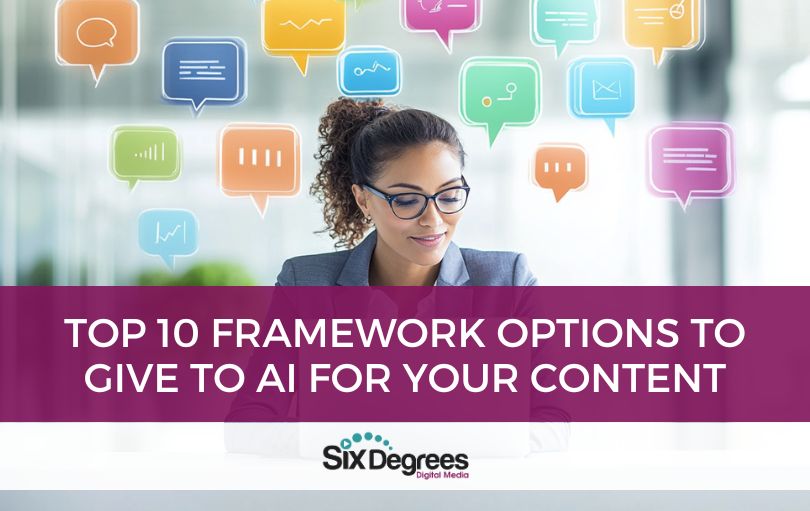Structuring Your Content for Success: The Secret Sauce
Picture this: You’re at a bustling cafe, trying to focus on your laptop amidst the aroma of freshly brewed coffee and the hum of conversations around you. You have an article to write, and the deadline is looming like a cloud threatening rain. The cursor blinks tauntingly at you. Ever been there? Yeah, me too.
The backbone of stellar content isn’t just about what you say but how you say it. Structure is everything. It’s the invisible thread that guides readers effortlessly through your thoughts, keeping them hooked from the first word to the last punctuation mark. Without structure, even the most insightful content can feel like a chaotic jumble of ideas.
Enter the world of content frameworks—your new best friend in creating organized, engaging, and impactful content. These frameworks are like blueprints for your articles, helping you build a solid foundation that supports your narrative and enhances readability.
Now, imagine having a supercharged assistant—one that’s powered by AI—helping you choose and utilize these frameworks effectively. AI isn’t just some sci-fi concept anymore; it’s here, ready to lend a hand in your content strategy. From selecting the perfect framework to customizing it to fit your unique voice and audience, AI can take the guesswork out of content creation.
Here are the ten framework options you can feed into your AI for crafting compelling content that stands out. Let’s turn that blinking cursor into a stream of brilliant words!
Popular Content Frameworks
Alright, let’s get into the meat and potatoes of content creation. You’re probably wondering, “What are these frameworks, and why should I care?” Think of them as the Swiss Army knives of content writing—they’re versatile tools that can save you a heap of time and stress. Let’s explore the some frameworks that can give your AI the boost it needs to generate compelling content.
- AIDA (Attention, Interest, Desire, Action): This classic framework is like the old reliable car you can always count on. It starts by grabbing the reader’s attention, piquing their interest, stoking their desire, and finally driving them to take action. Perfect for ads and landing pages.
- PAS (Problem-Agitate-Solution): This one’s all about empathy. You identify a problem, agitate it by showing its impact, and then swoop in with a solution. Great for sales copy and blog posts aimed at offering solutions.
- Storytelling: Humans are hardwired for stories. This framework helps you weave narratives that are memorable and engaging. Whether it’s a customer success story or a brand’s journey, storytelling makes your content relatable.
- How-To: A favorite among DIY enthusiasts and those who love clear instructions. This framework breaks down processes into manageable steps. Excellent for guides, tutorials, and instructional content.
- Listicle: Ah, the beloved listicle! It’s easy to skim and digest, making it perfect for busy readers. Think “Top 10 Ways to Improve Your SEO” or “5 Hacks for Better Email Campaigns.”
- Problem-Solution: Similar to PAS but more straightforward. Identify a problem and immediately offer a solution. Ideal for case studies and technical articles.
- Comparison: Who doesn’t love a good showdown? Whether you’re comparing products or strategies, this framework helps readers make informed decisions. Perfect for product reviews and comparison articles.
- Review: This one’s for detailed analysis of products or services. Readers get insights on pros and cons before making decisions. Great for tech reviews and service evaluations.
- Interview: Leverage expert opinions by framing content around interviews with industry leaders or satisfied customers. Engaging and authoritative—perfect for thought leadership articles.
- Q&A (Questions and Answers): An interactive way to address common queries or concerns in your niche. It’s like having a friendly chat with your audience—ideal for FAQs and educational content.
Understanding these frameworks is just the first step; selecting the right one for your industry and audience can truly make your content shine. Next up, we’ll look at how you can pick the perfect framework tailored to your specific needs—stay tuned!
Alright, so you’ve got a menu of tasty content frameworks to choose from. But here’s the kicker: not all frameworks are created equal for every scenario. Selecting the right one for your industry and audience can be the difference between content that sings and content that snoozes.
Tailoring to Industry
First things first—think about your industry. Are you in healthcare, tech, education, or maybe retail? Each sector has its own unique quirks and demands. For instance, if you’re in MedTech, a How-To framework might be perfect for instructional guides on using new medical devices. Meanwhile, if you’re in EdTech, a Storytelling framework could work wonders for sharing success stories of students using your platform.
Consider this: An AI company might use the Comparison framework to pit their technology against competitors’, highlighting features and benefits in a way that’s clear and compelling. On the other hand, a non-profit organization might find the Storytelling framework more effective to share impactful anecdotes about their work.
Audience Consideration
Now let’s talk about your audience. Knowing who they are is crucial. Are they tech-savvy millennials, busy parents, or seasoned professionals? Each group has different preferences and needs.
For example, if your audience is comprised of overworked managers who barely have time to breathe (let alone read), a Listicle could be a lifesaver. It allows them to skim through key points quickly and get the gist without wading through paragraphs of text.
On the flip side, if your audience loves detailed information and thorough analysis, they’ll appreciate a Review or Comparison framework. These offer depth and cater to readers who want every piece of information before making decisions.
By marrying the right framework with your specific industry needs and audience preferences, you’re setting up your content for success. Not only does this approach make your content more engaging, but it also builds trust—showing readers you understand them inside and out.
Next up, let’s explore how AI can be your secret weapon in customizing these frameworks even further. Get ready to see how technology can refine and personalize your content like never before!
So, you’ve got the frameworks and a sense of what suits your industry and audience. Now let’s add a sprinkle of tech magic to the mix. AI can be your secret weapon for customizing these frameworks to make them even more effective. Here’s how.
Using AI for Recommendations
Imagine having a super-intelligent intern who never sleeps and knows everything about your audience and industry. That’s AI for you. By analyzing your past content, audience engagement, and industry trends, AI can recommend the most suitable frameworks for your content needs. It’s like having a content strategist on speed dial.
For instance, if your analytics show that your audience loves skimmable content, AI might suggest using Listicles more frequently. Or, if storytelling pieces are getting the most shares on social media, it’ll nudge you in that direction. The key is to feed your AI with enough data about your audience and industry so it can make the best recommendations.
Adapting Frameworks
But why stop at recommendations? AI can also help you adapt these frameworks to meet specific goals. Need a hybrid between Storytelling and How-To? Just ask. Want a Listicle that includes elements of Problem-Solution? Consider it done.
AI tools can blend different frameworks seamlessly, allowing you to create unique formats tailored to your brand’s voice and audience preferences. You can instruct the AI to adjust tone, style, and even incorporate specific keywords for SEO optimization.
By leveraging AI’s capabilities, you not only save time but also produce more effective content tailored to your unique requirements. This approach builds trust with your audience, showing them you’re committed to delivering precisely what they need.
With the power of AI at your fingertips, you’re well-equipped to create personalized content that truly resonates. But before we wrap up, let’s recap the benefits of understanding and utilizing these frameworks—and don’t miss our special offer at the end!
Wrapping It All Up: Your Roadmap to Engaging Content
So, what’s the takeaway from all this? Well, understanding and utilizing various content frameworks is like having a well-stocked toolkit. It equips you to craft content that’s not just engaging but also structured and effective.
Whether it’s capturing attention with AIDA or telling a compelling story, these frameworks can be tailored to your specific needs. And with AI at your side, customization becomes a breeze—transforming the way you create and deliver content.
Ready improve your content game? Don’t let those blinking cursors taunt you any longer. Schedule a free consultation with us today, and let’s explore how you can use these frameworks to captivate your audience and achieve your content goals. Trust us, you’ll wonder how you ever managed without it!







